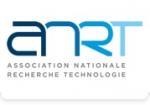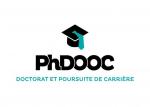Détection ultra-précoce de pathogènes bactériens dans le sang de patient // Ultra-fast pathogenic bacteria detection in human blood
| ABG-133809 | Thesis topic | |
| 2025-10-14 | Public/private mixed funding |
CEA Université Grenoble Alpes
Grenoble
Détection ultra-précoce de pathogènes bactériens dans le sang de patient // Ultra-fast pathogenic bacteria detection in human blood
- Engineering sciences
Instrumentation / Sciences pour l’ingénieur / Chimie biologique / Sciences du vivant
Topic description
Ce projet vise à développer un instrument d'imagerie par résonance des plasmons de surface (SPRi) polyvalent et facile à utiliser pour la détection rapide et à large spectre de concentrations faibles de bactéries pathogènes dans des échantillons complexes, dont le sang en particulier. La SPRi est une technique, sans marquage, qui permet de sonder un échantillon (quelle que soit sa transparence optique), en temps réel. En raison de la grande sensibilité du phénomène de plasmon, la plage dynamique de variation d'indice mesurable est limitée par détection SPRi lorsque la lecture est réalisée à un angle fixe, comme c'est le cas dans les dispositifs déployés dans le commerce. Cela réduit l'utilisation de tels instruments optiques à l'étude de milieux dont l'indice reste relativement stable pendant l'expérience et dont les sondes moléculaires ont des poids moléculaires comparables aux cibles (suivi d'interactions bi-moléculaires).
Ainsi, cela limite considérablement la détection de bactéries en croissance dans des milieux complexes. Notre laboratoire a développé des solutions originales pour la détection de très faibles taux de contaminations dans des matrices alimentaires (création d'une start-up en 2012), mais la SPRi se révèle inadaptée pour la détection de bactéries dans le sang, en partie en raison de la très forte variabilité intrinsèque de cette matrice.
Ces limites seront supprimées en intégrant cinq briques complémentaires :
1. La conception d'un instrument optimisé pour l'enregistrement en temps réel d'images SPR sur une plage définie d'angles d'éclairage;
2. Le développement d'une analyse et de traitement des données SPR dédiée pour extraire en temps réel l'information la plus pertinente pour chaque sonde à partir des images ;
3. La fonctionnalisation des biopuces par une combinaison de sondes appropriées (séries de peptides tels que les peptides antimicrobiens (AMPs), anticorps et même bactériophages) pour optimiser le nombre d'identifications possibles avec un ensemble réduit de sondes ;
4. L'apprentissage des "signatures SPRi 4D" spécifiques de souches modèles dans des matrices sanguines ;
5. La validation des performances du nouvel instrument « 4D-SPRi » comme outil de détection et de caractérisation des bactéries issues de souches hospitalières par rapport à des techniques de référence.
------------------------------------------------------------------------------------------------------------------------------------------------------------------------
------------------------------------------------------------------------------------------------------------------------------------------------------------------------
This project aims to develop a versatile and easy-to-use surface plasmon resonance imaging (SPRi) instrument for the rapid and broad-spectrum detection of low concentrations of pathogenic bacteria in complex samples, particularly blood. SPRi is a label-free technique that allows real-time probing of a sample (regardless of its optical transparency). Due to the high sensitivity of the plasmon phenomenon, the dynamic range of measurable index variation is limited by SPRi detection when reading is performed at a fixed angle, as is the case in commercially available devices. This reduces the use of such optical instruments to the study of environments whose index remains relatively stable during the experiment and whose molecular probes have molecular weights comparable to the targets (monitoring of bimolecular interactions).
This considerably limits the detection of growing bacteria in complex environments. Our laboratory has developed original solutions for the detection of very low levels of contamination in food matrices (creation of a start-up in 2012), but SPRi is unsuitable for the detection of bacteria in blood, partly due to the very high intrinsic variability of this matrix.
These limitations will be overcome by integrating five complementary components:
1. The design of an instrument optimized for real-time recording of SPR images over a defined range of illumination angles;
2. The development of dedicated SPR data analysis and processing to extract the most relevant information for each probe from the images in real time;
3. The functionalization of biochips through a combination of appropriate probes (series of peptides such as antimicrobial peptides (AMPs), antibodies, and even bacteriophages) to optimize the number of possible identifications with a reduced set of probes;
4. The learning of specific “4D-SPRi signatures” of model strains in blood matrices;
5. Validation of the performance of the new “4D-SPRi” instrument as a tool for detecting and characterizing bacteria from hospital strains compared to reference techniques.
------------------------------------------------------------------------------------------------------------------------------------------------------------------------
------------------------------------------------------------------------------------------------------------------------------------------------------------------------
Pôle fr : Direction de la Recherche Fondamentale
Département : Institut de Recherche Interdisciplinaire de Grenoble
Service : DIESE
Date de début souhaitée : 01-11-2026
Ecole doctorale : Chimie et Sciences du Vivant (EDCSV)
Directeur de thèse : ROUPIOZ Yoann
Organisme : CNRS
Laboratoire : DRF/IRIG/SyMMES/CREAB
URL : https://www.symmes.fr/Pages/Yoann-Roupioz/CV.aspx
URL : https://www.symmes.fr/Pages/CREAB/Presentation.aspx
URL : https://www.symmes.fr/
Ainsi, cela limite considérablement la détection de bactéries en croissance dans des milieux complexes. Notre laboratoire a développé des solutions originales pour la détection de très faibles taux de contaminations dans des matrices alimentaires (création d'une start-up en 2012), mais la SPRi se révèle inadaptée pour la détection de bactéries dans le sang, en partie en raison de la très forte variabilité intrinsèque de cette matrice.
Ces limites seront supprimées en intégrant cinq briques complémentaires :
1. La conception d'un instrument optimisé pour l'enregistrement en temps réel d'images SPR sur une plage définie d'angles d'éclairage;
2. Le développement d'une analyse et de traitement des données SPR dédiée pour extraire en temps réel l'information la plus pertinente pour chaque sonde à partir des images ;
3. La fonctionnalisation des biopuces par une combinaison de sondes appropriées (séries de peptides tels que les peptides antimicrobiens (AMPs), anticorps et même bactériophages) pour optimiser le nombre d'identifications possibles avec un ensemble réduit de sondes ;
4. L'apprentissage des "signatures SPRi 4D" spécifiques de souches modèles dans des matrices sanguines ;
5. La validation des performances du nouvel instrument « 4D-SPRi » comme outil de détection et de caractérisation des bactéries issues de souches hospitalières par rapport à des techniques de référence.
------------------------------------------------------------------------------------------------------------------------------------------------------------------------
------------------------------------------------------------------------------------------------------------------------------------------------------------------------
This project aims to develop a versatile and easy-to-use surface plasmon resonance imaging (SPRi) instrument for the rapid and broad-spectrum detection of low concentrations of pathogenic bacteria in complex samples, particularly blood. SPRi is a label-free technique that allows real-time probing of a sample (regardless of its optical transparency). Due to the high sensitivity of the plasmon phenomenon, the dynamic range of measurable index variation is limited by SPRi detection when reading is performed at a fixed angle, as is the case in commercially available devices. This reduces the use of such optical instruments to the study of environments whose index remains relatively stable during the experiment and whose molecular probes have molecular weights comparable to the targets (monitoring of bimolecular interactions).
This considerably limits the detection of growing bacteria in complex environments. Our laboratory has developed original solutions for the detection of very low levels of contamination in food matrices (creation of a start-up in 2012), but SPRi is unsuitable for the detection of bacteria in blood, partly due to the very high intrinsic variability of this matrix.
These limitations will be overcome by integrating five complementary components:
1. The design of an instrument optimized for real-time recording of SPR images over a defined range of illumination angles;
2. The development of dedicated SPR data analysis and processing to extract the most relevant information for each probe from the images in real time;
3. The functionalization of biochips through a combination of appropriate probes (series of peptides such as antimicrobial peptides (AMPs), antibodies, and even bacteriophages) to optimize the number of possible identifications with a reduced set of probes;
4. The learning of specific “4D-SPRi signatures” of model strains in blood matrices;
5. Validation of the performance of the new “4D-SPRi” instrument as a tool for detecting and characterizing bacteria from hospital strains compared to reference techniques.
------------------------------------------------------------------------------------------------------------------------------------------------------------------------
------------------------------------------------------------------------------------------------------------------------------------------------------------------------
Pôle fr : Direction de la Recherche Fondamentale
Département : Institut de Recherche Interdisciplinaire de Grenoble
Service : DIESE
Date de début souhaitée : 01-11-2026
Ecole doctorale : Chimie et Sciences du Vivant (EDCSV)
Directeur de thèse : ROUPIOZ Yoann
Organisme : CNRS
Laboratoire : DRF/IRIG/SyMMES/CREAB
URL : https://www.symmes.fr/Pages/Yoann-Roupioz/CV.aspx
URL : https://www.symmes.fr/Pages/CREAB/Presentation.aspx
URL : https://www.symmes.fr/
Funding category
Public/private mixed funding
Funding further details
Presentation of host institution and host laboratory
CEA Université Grenoble Alpes
Pôle fr : Direction de la Recherche Fondamentale
Département : Institut de Recherche Interdisciplinaire de Grenoble
Service : DIESE
Candidate's profile
Ingénieur/e généraliste - biotechnologie
Apply
Close
Vous avez déjà un compte ?
Nouvel utilisateur ?
More information about ABG?
Get ABG’s monthly newsletters including news, job offers, grants & fellowships and a selection of relevant events…
Discover our members
 MabDesign
MabDesign  ANRT
ANRT  Aérocentre, Pôle d'excellence régional
Aérocentre, Pôle d'excellence régional  ONERA - The French Aerospace Lab
ONERA - The French Aerospace Lab  Institut Sup'biotech de Paris
Institut Sup'biotech de Paris  CESI
CESI  ADEME
ADEME  PhDOOC
PhDOOC  Groupe AFNOR - Association française de normalisation
Groupe AFNOR - Association française de normalisation  Nokia Bell Labs France
Nokia Bell Labs France  Ifremer
Ifremer  Tecknowmetrix
Tecknowmetrix  Laboratoire National de Métrologie et d'Essais - LNE
Laboratoire National de Métrologie et d'Essais - LNE  MabDesign
MabDesign  SUEZ
SUEZ  Généthon
Généthon  ASNR - Autorité de sûreté nucléaire et de radioprotection - Siège
ASNR - Autorité de sûreté nucléaire et de radioprotection - Siège  TotalEnergies
TotalEnergies  CASDEN
CASDEN
-
JobRef. 133388, CanadaMcGill University
Post-doctoral position in medicinal chemistry
Scientific expertises :Chemistry
Experience level :Junior
-
JobRef. 134131, Provence-Alpes-Côte d'Azur , FranceCentre national de la recherche scientifique
Ingénieur·e d’étude ou de recherche en biologie cellulaire et moléculaire
Scientific expertises :Biotechnology - Biology - Computer science
Experience level :Confirmed
-
JobRef. 133985, Occitanie , France
 CIRAD
CIRADExpert.e sur les systèmes alimentaires dans les pays du Sud
Scientific expertises :Economy, management - Agronomy, agri food - Economy, management
Experience level :Confirmed


